Integrated sequence and expression analysis of ovarian cancer structural variants underscores the importance of gene fusion regulation
- PMID: 26177635
- PMCID: PMC4504069
- DOI: 10.1186/s12920-015-0118-9
Integrated sequence and expression analysis of ovarian cancer structural variants underscores the importance of gene fusion regulation
Abstract
Background: Genomic rearrangements or structural variants (SVs) are one of the most common classes of mutations in cancer.
Methods: An integrated DNA sequencing and transcriptional profiling (RNA sequence and microarray gene expression data) analysis was performed on six ovarian cancer patient samples. Matched sets of control (whole blood) samples from these same patients were used to distinguish cancer SVs of germline origin from those arising somatically in the cancer cell lineage.
Results: We detected 10,034 ovarian cancer SVs (5518 germline derived; 4516 somatically derived) at base-pair level resolution. Only 11 % of these variants were shown to have the potential to form gene fusions and, of these, less than 20 % were detected at the transcriptional level.
Conclusions: Collectively our results are consistent with the view that gene fusions and other SVs can be significant factors in the onset and progression of ovarian cancer. The results further indicate that it may not only be the occurrence of these variants in cancer but their regulation that contributes to their biological and clinical significance.
Figures
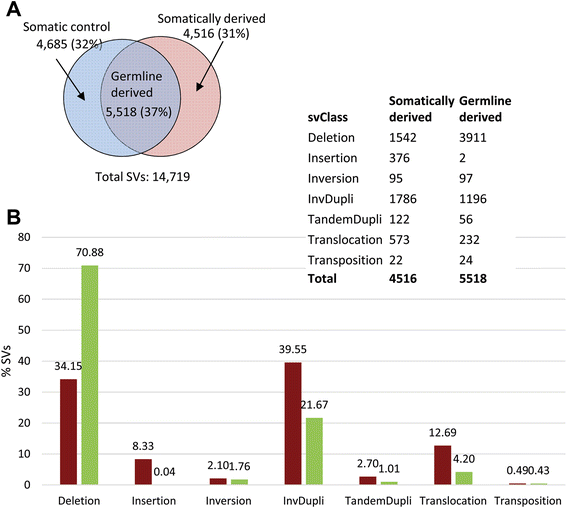
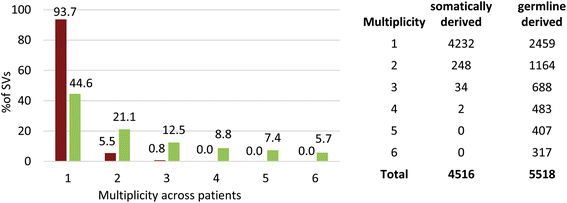
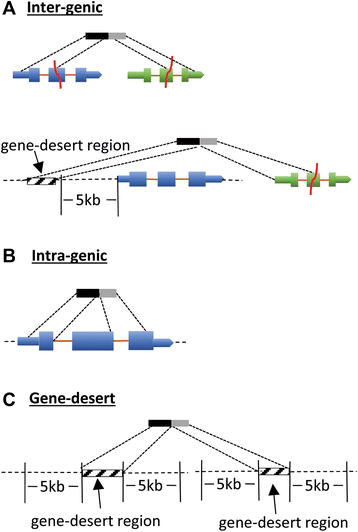
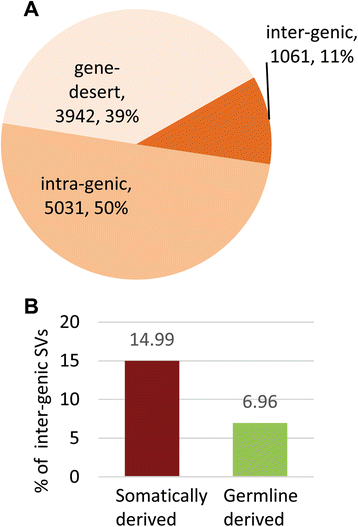
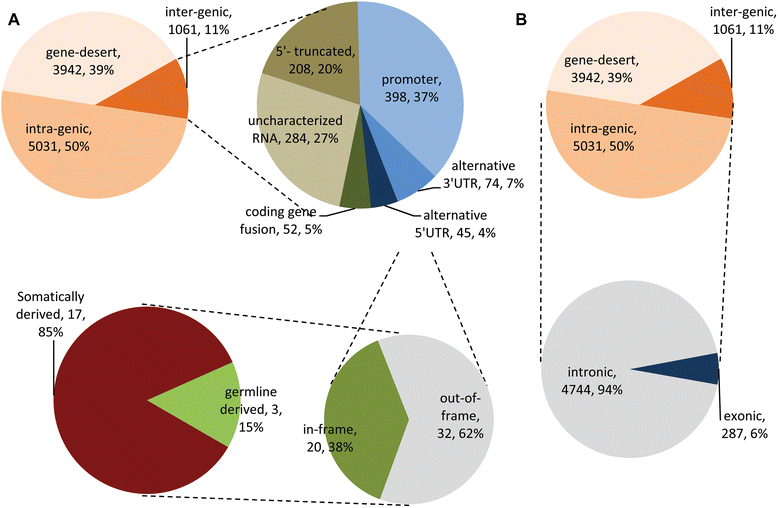
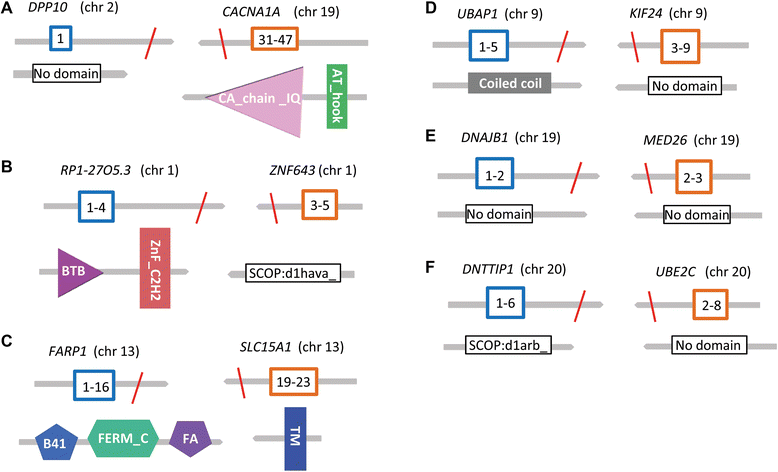
Similar articles
-
Physical and transcript map of the region between D6S264 and D6S149 on chromosome 6q27, the minimal region of allele loss in sporadic epithelial ovarian cancer.Oncogene. 2002 Jan 17;21(3):387-99. doi: 10.1038/sj.onc.1205067. Oncogene. 2002. PMID: 11821951
-
Mutation analysis and characterization of ATR sequence variants in breast cancer cases from high-risk French Canadian breast/ovarian cancer families.BMC Cancer. 2006 Sep 29;6:230. doi: 10.1186/1471-2407-6-230. BMC Cancer. 2006. PMID: 17010193 Free PMC article.
-
Sequence variants of DLC1 in colorectal and ovarian tumours.Hum Mutat. 2000;15(2):156-65. doi: 10.1002/(SICI)1098-1004(200002)15:2<156::AID-HUMU4>3.0.CO;2-4. Hum Mutat. 2000. PMID: 10649492
-
Gene fusions in tumourigenesis with particular reference to ovarian cancer.J Med Genet. 2021 Dec;58(12):789-795. doi: 10.1136/jmedgenet-2021-108010. Epub 2021 Aug 30. J Med Genet. 2021. PMID: 34462289 Review.
-
The emerging complexity of gene fusions in cancer.Nat Rev Cancer. 2015 Jun;15(6):371-81. doi: 10.1038/nrc3947. Nat Rev Cancer. 2015. PMID: 25998716 Review.
Cited by
-
De novo assembly and characterization of breast cancer transcriptomes identifies large numbers of novel fusion-gene transcripts of potential functional significance.BMC Med Genomics. 2017 Aug 29;10(1):53. doi: 10.1186/s12920-017-0289-7. BMC Med Genomics. 2017. PMID: 28851357 Free PMC article.
-
Genomic analysis of oesophageal squamous-cell carcinoma identifies alcohol drinking-related mutation signature and genomic alterations.Nat Commun. 2017 May 26;8:15290. doi: 10.1038/ncomms15290. Nat Commun. 2017. PMID: 28548104 Free PMC article.
-
Intrinsically disordered proteins and prostate cancer: pouring new wine in an old bottle.Asian J Androl. 2016 Sep-Oct;18(5):659-61. doi: 10.4103/1008-682X.184272. Asian J Androl. 2016. PMID: 27427556 Free PMC article.
References
-
- Pleasance ED, Cheetham RK, Stephens PJ, McBride DJ, Humphray SJ, Greenman CD, Varela I, Lin ML, Ordonez GR, Bignell GR, Ye K, Allpaz J, Bauer MJ, Beare D, Butler A, Carter RJ, Chen L, Cox AJ, Edkins S, Kokko-Gonzales PI, Gormley NA, Grocock RJ, Haudenschild CD, Hims MM, James T, Jia M, Kingsbury Z, Leroy C, Marshall J, Menzies A, Mudie LJ, Ning Z, Royce T, Schulz-Trieglaff OB, Spiridou A, Stebbins LA, Szajkowski L, Teague J, Williamson D, Chin L, Ross MT, Campbell P, Bentley DR, Futreal PA, Stratton MR. A comprehensive catalogue of somatic mutations from a human cancer genome. Nature. 2010;463:191–196. doi: 10.1038/nature08658. - DOI - PMC - PubMed
-
- Edwards PA. Fusion genes and chromosome translocations in the common epithelial cancers. J Path. 2010;220:244–254. - PubMed
MeSH terms
LinkOut - more resources
Full Text Sources
Other Literature Sources
Medical

